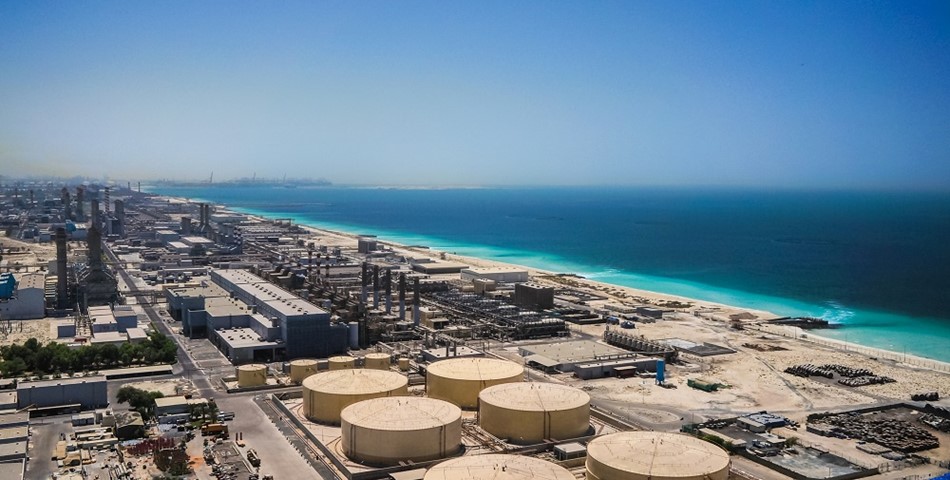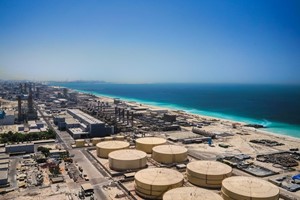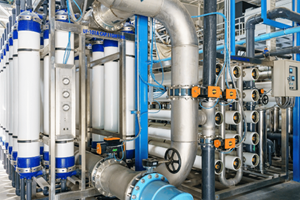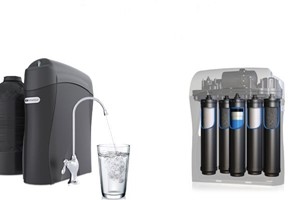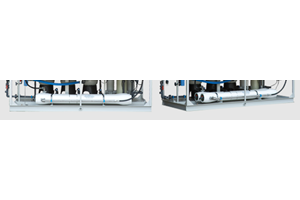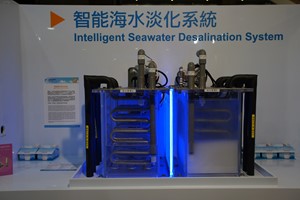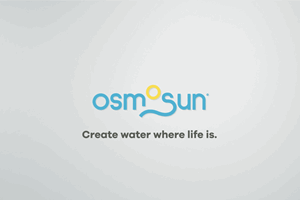There are several common ways to design industrial reverse osmosis systems but they all include common components such as membranes, pumps and devices used to manage flow and pressure. Reverse osmosis membranes are incorporated into systems that deliver source water to the membranes, apply cross flow that sweeps concentrate from the membrane surface, and provide a pathway for conveying water that permeates through the membranes. Typically, a high pressure pump provides both the driving force for the separation the cross flow, but several current process designs use a circulation pump to drive cross flow, such that the role of the high pressure pump is reduced to pressurizing the system and driving permeate flow.
Reverse Osmosis Process Configurations
A typical system for industrial reverse osmosis is shown in Figure 1. A high-pressure pump (HP) feeds the system. Pressure vessels containing multiple membrane elements are arrayed in parallel. Each pressure vessel contains 6 or 7 membrane elements in series, with the concentrate of each element being fed to the subsequent element. One stage typically achieves 50% recovery and higher recovery rates require multiple stages. The productivity of multiple stages are balanced by throttling the permeate flow from front stages and/or boosting feed pressure to later stages with a booster pump (BP). The number of pressure vessels arrayed in parallel in each subsequent stage is reduced to maintain sufficient cross flow in later stages. Finally, brine is throttled out of the system through a valve or a device that regulates system pressure.
At 50% recovery per stage, four stages are required to achieve over 90% recovery. Multiple stages add design and operational complexity and reduce process flexibility. Alternately, recovery can be increased by continuously returning some of the brine to the membrane feed. However, the increase in feed, brine and permeate salinity caused by brine recirculation usually undermines the benefits it provides.
Emerging closed circuit or semi-batch RO processes, which utilize brine recirculation in a batch-like operation, provide a new means to achieve high recovery without multiple stages or reduced permeate quality. (8, 9) Such a process is illustrated in Figure 2. A high pressure pump (HP) feeds a closed loop comprised of a single-stage of membrane elements and a circulation pump (CP). Permeate is produced at a rate equal to the flow rate of the HP. Brine is recirculated without depressurization. When a desired recovery percentage is reached, brine is flushed out of the system, displaced by feedwater from the high-pressure pump. The exchange of brine and feedwater is executed without stopping the high pressure pump or the production of permeate and without depressurizing the system. The process then returns to closed-circuit operation, during which there is no brine reject stream.
Over 98% recovery has been achieved in closed circuit reverse osmosis processes. Energy requirements are reduced because the average membrane feed pressure required to achieve a given recovery rate is lower. The ability to change recovery at the control panel provides substantial flexibility. The frequent flushing of the system by the brine-feedwater exchange also helps suppress fouling and scaling such that higher recovery rates can be sustained.
For lower-recovery, higher-pressure applications, such as seawater desalination, an alternative closed-circuit process is used to minimize energy requirements. (10, 11) In this process configuration, brine is displaced from the membranes with pressurized feedwater from a side chamber. The exchange, emptying and refilling of the side chamber is done under hydrostatic conditions with almost no loss of pressure energy.
In seawater RO, higher pressures are generally required than in industrial RO. This makes energy consumption more important and it limits recovery rates. A typical seawater RO process is illustrated in Figure 3. Like in the closed-circuit industrial RO system, the seawater process uses both a high pressure pump and a circulation pump to feed the membrane array. In addition, an energy recovery device (ERD) is used to remove brine and replace it with feedwater while maintaining system pressure. These devices save energy by recovering pressure energy from the brine and returning it to the process, thereby reducing the duty of the high pressure pump.




